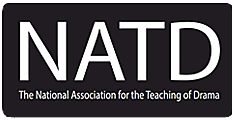What’s In A Text?: DNA Reflections by Gemma Grubb
Gemma Grubb is Head of Drama at Hazelwick School, Crawley, West Sussex. Here she describes her reasons for working with DNA by Dennis Kelly.
‘DNA’ by Dennis Kelly
I have taught Edexcel GCSE Drama since the introduction of the new syllabus in 2016. There wasn’t really much difference between the exam boards but having a close friend who is an Edexcel examiner swayed it.
When it came to choosing a set text for Component 3, Dennis Kelly’s ‘DNA’ seemed an obvious choice. The characters are teenagers in Year 11 who have bullied a young boy – sadly a universal theme amongst secondary schools. The characters are also fairly universal, with Kelly writing in the notes ‘Names and genders of the characters are suggestions only, and can be changed to suit performers.’ This therefore enables a diverse range of characters to be represented in the exploration of the text. A final reason for the choice of text is that the play is set over just three locations, so it makes the consideration of set design manageable for the wide range of abilities we see at GCSE level. Not only that, but the design itself lends itself to both naturalistic designs or even the use of projections to suggest location.
Yes, studying ‘DNA’ as our Component 3 text does mean that we cannot perform any modern plays (post 2000) for the scripted assessment, but the benefits of having relatable subject matter, characters, and a modern text far outweigh the negatives in my humble opinion.
From the initial read through of the text in class, to the practical exploration, the students engage. They enjoy the power struggle in the play and, of course, the occasional swear word. They can imagine students in their year group who are the over-sharing, over-thinking ‘Leah’; the same goes for other characters in the play.
To engage the students further we put on a production of the play, with the four acts being shared amongst the GCSE classes. Not only does this help the students have concrete examples of how they would apply vocal and physical skills to the interpretation of a character, but by allocating design roles to students, it also provides the opportunity to try out specific design choices. In addition to this, we invite parents along to the performance which helps with parental engagement with the school and provides an opportunity to see the work we create in Drama.
We have been lucky enough to see the National Youth Theatre production of ‘DNA’ directed by Frantic Assembly’s Sean Hollands, and that has provided some useful set design ideas to share with the students. There are also a few amateur versions of the play on YouTube, which again gives the students a springboard for ideas (even if those ideas are what not to do!).
All in all, we have found the text a hit with the students and staff alike since we began teaching it in 2016, so will continue to use ‘DNA’ until that changes.
